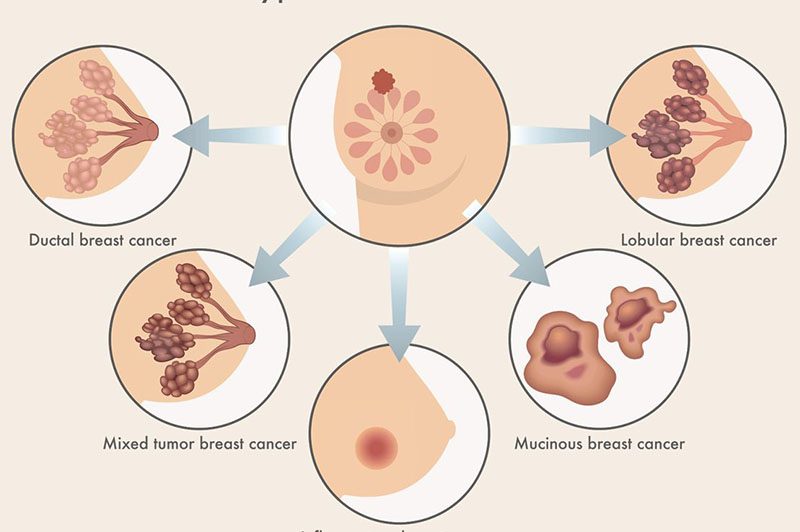
Breast Cancer Series 3
Various Types and Treatments
Early detection of breast cancer alone does not save lives. Early detection and early treatment are the vital factors that increase the chances of survival.
However, the type of breast cancer also plays a role in the likelihood of survival following treatment. The specific cancer type and available treatments would make a difference between good and poor treatment response or death.
This article will shed more light on the various types of breast cancers, specific symptoms and responses to treatment.
Types of Breast Cancer
The classification of breast cancer is constantly being reviewed and modified based on research.
Breast cancer is classified by the following:
The kind of breast tissue in which cancer starts.
This could be either of three types of breast tissues
- The milk ducts: These are the pipes that convey milk and open up at the nipple, cancers affecting this area are the most common. Constitutes up to 70% of breast cancers.
- The breast lobules: The glands that produce breast milk or
- The fatty tissues and other tissues in the breast. This is the least common according to researchers.
The extent of cancer spread
The farther cancer spreads, the less the possibility of survival. An individual with a local spread to the armpit lymph nodes, for instance, has a higher chance of survival with appropriate treatment than one in whom cancer has spread to areas away from the breast such as the brain, bones and the liver.
Cancer that has spread to other parts of the body would require multiple treatment modalities.
The type of tumour receptors on the cancer cells
Receptors are substances on the surface of a cell to which another substance can attach. Imagine a receptor to be a door or padlock while the substance that attaches to it is the key to the door that fits perfectly into the keyhole.
The three most common receptors found on the surface of breast cancer cells are progesterone, oestrogen, and HER2 receptors.
Oestrogen receptor-positive cancers grow faster when exposed to estrogen. It is more common in women that have attained menopause. It grows slowly. Therefore, this type is treated with medications that block off the attachment of oestrogen to the receptor.
Cancer cells that have progesterone receptors on their cell surface are called progesterone receptors-positive breast cancer and grow very slowly without progesterone. In contrast, the presence of progesterone would make it grow bigger and faster.
The HER2 receptor is normal in healthy breast cells. Its function is to make the breasts grow. Cancer cells have too many HER2 receptors on their surfaces which makes them grow speedily. HER2 receptor-positive breast cancers are one of the most aggressive in growth. However, it can be treated with targeted drugs against the receptors.
Size of the tumour and the number of lymph nodes affected by the tumour.
Inflammatory breast cancer affects the whole breast tissue at once, therefore the person may not detect any lumps. It can be seen in a screening mammography film. This type is fast-growing, and aggressive and spreads to the armpit lymph nodes where they feel as hard as stones. It can lead to death within a short time.
When breast cancer is detected late, or treatment starts at later stages, it might spread to other parts of the body. Life expectancy drops drastically for untreated breast cancer.
The symptoms of spread may be the 1st and more worrisome than the symptoms of breast cancer.
Treatment of breast cancer
Treatment of breast cancer is targeted based on the type of cancer.
The stages of treatment after diagnoses are as follows:
- Remove the breast lump (if it is little) with surrounding breast tissue
- Remove the whole affected breast particularly if it has occupied the entire breasts.
- Have courses of chemotherapy.
- Radiation therapy may be required to kill any remaining cancer cells. Your oncologist will decide if this is a good option for you based on your history, physical examination, and test results.
Summary
Your oncologist will consider Breast cancer type, and extent of spread when deciding what treatment would suit you. No two persons have the same circumstance, therefore cancer treatments are different for different people even with the same type of tissue breast cancer.







